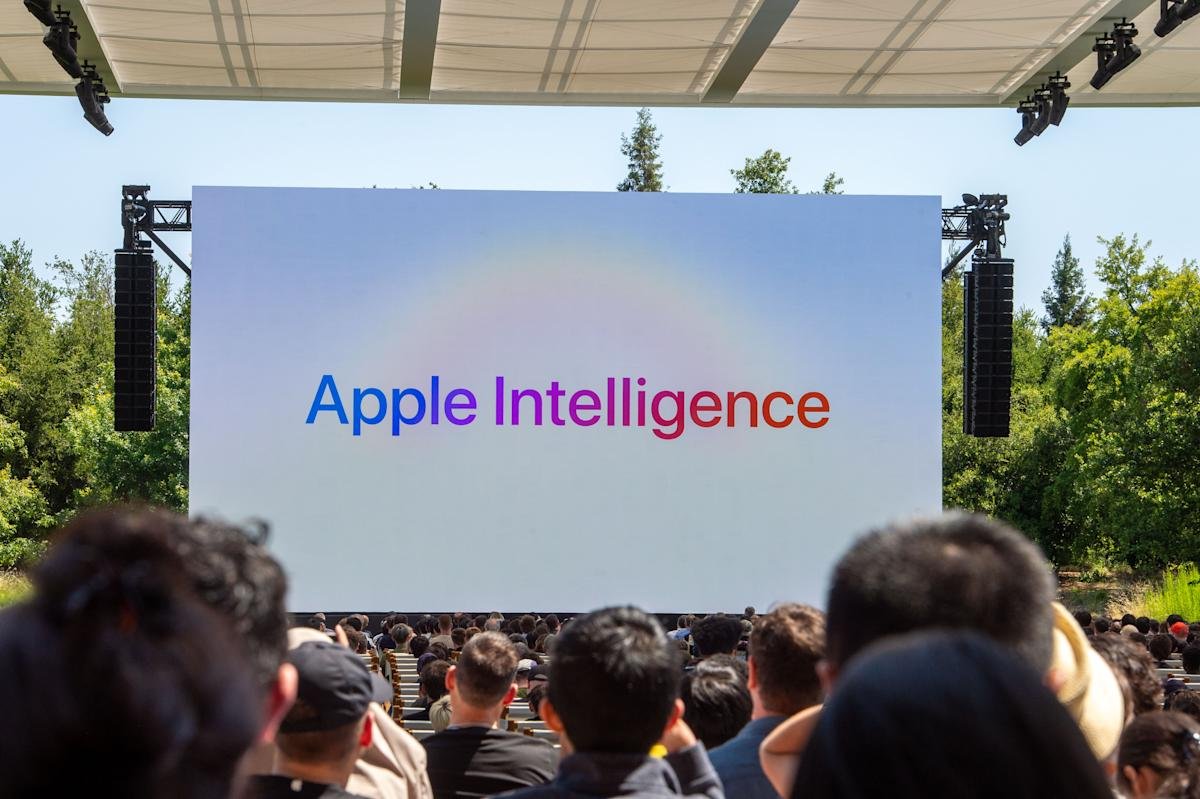Tools & Platforms
Trump announces plan to accelerate U.S. artificial intelligence development

President Donald Trump on Wednesday announced a sweeping plan to accelerate the development of artificial intelligence and further integrate the technology across the federal government.
His speech made clear he wanted to allow a lot of leeway for tech executives to lead, and that he sees artificial intelligence as a crucial way for the country to stay competitive in the future.
“We need U.S. technology companies to be all in for America. We want you to put America first,” Trump said at an AI conference, to a crowd of government officials, lawmakers and industry insiders.
“America is the country that started the AI race and as president of the U.S., I’m here today to declare that America is going to win it,” Trump added.
During the event, Trump signed a series of executive orders to incorporate the recommendations in the White House’s action-plan report into official federal policy. The report lays out a pathway to what the White House said would “ensure global dominance in artificial intelligence” for the U.S.
“The industry is a beautiful baby that’s born. We need to grow that baby and let that baby thrive. We can’t stop it with politics, we can’t stop it with foolish rules,” Trump said. “At the same time, we need rules, but they need to be smart, they need to be brilliant.”
The action plan calls for federal agencies to exempt certain AI infrastructure projects from environmental review, to make federal lands available for building AI infrastructure, to export AI technology to allied countries and to push agencies to contract AI that “objectively reflects truth” and “American values.”
Trump’s action plan also provides an ideological framework for AI models that are integrated within government agencies.
The report directs federal agencies to contract only with AI models that are “free from ideological bias” and are “designed to pursue objective truth rather than social engineering agendas.” The report says that AI models contracted by federal agencies should “eliminate references to misinformation, Diversity, Equity, and Inclusion, and climate change.”
These proposals are designed to make sure AI “remains truth seeking and trustworthy,” David Sacks, a senior White House AI adviser, told reporters on a call earlier on Wednesday.
The report, which Sacks said was designed with input from the private sector, also lays out a plan to disincentivize state-level AI regulation, which AI companies have long opposed.
In his speech, Trump also advocated for “one common sense federal standard.”
“We have to have a single federal standard, not 50 different states regulating this industry of the future,” Trump said. “I want you to be successful, but I want you to be successful and you can’t have one state holding you up,” he said about the AI industry.
The report recommends federal agencies with “AI-related discretionary funding” to consider state-level AI regulation before making funding decisions and to “limit funding if the state’s AI regulatory regimes may hinder the effectiveness of that funding or award.”
Several states, including Colorado and California, have passed or are working to pass regulations governing the development and implementation of AI. Congressional Republicans tried to add a national ban on state-level AI regulation in the budget reconciliation bill passed last month. The measure was ultimately taken out of the bill, but proponents, like Sen. Ted Cruz, have said they plan to reintroduce the measure in future legislation.
Michael Kratsios, a White House science and technology adviser, said on Wednesday that government agencies should repeal “unnecessary bureaucratic red tape” that he said slows down the adoption of AI across federal agencies within the next year.
The report recommends federal agencies identify and repeal internal policies that could slow down the adoption, development, integration or deployment of AI. It also advises agencies to find areas of collaboration between the government and private companies while creating conditions where the “private-sector-led innovation can flourish.”
“We’re asking the private sector to recommend regulatory barriers” for the administration to consider removing,” Kratsios added.
During his speech, Trump said he wanted to turn the U.S. into an “AI export powerhouse,” ensuring that allies source AI technology from the U.S.
“Under my administration, we will maintain necessary protections for our national security, but will never forget that the greatest threat of all is to forfeit the race and force our partners into rival technology.”
Kratsios said that exporting American AI technology would ensure market dominance for U.S. developers and disincentivize possible allies to contract Chinese AI technology.
Kratsios said that “American AI must be the gold standard” and the Department of Commerce would establish a program to export U.S.-developed hardware, AI models and standards to allied countries while strengthening export controls on foreign adversaries like China.
“The federal government has a role in making it easier for our allies and partners to do business with American innovators and ensure that the world runs on American AI,” Kratsios said.
Samuel Larreal is a NOTUS reporter and an Allbritton Journalism Institute fellow. This story was produced as part of a partnership between NOTUS and San José Spotlight.
Tools & Platforms
How AI is Transforming Modern Logistics

The modern supply chain landscape is undergoing a fundamental transformation. Enterprises first saw the urgent need to derisk their supply chain and build viable alternatives, when, during the pandemic, they knew it was no longer enough to deliver just-in-time but had to also factor in for just-in-case. As global markets become increasingly complex and unpredictable, manufacturers and logistics providers are racing to build supply chains that prioritize three critical attributes: intelligence, resilience and speed. This evolution is driven by a confluence of factors, including consumer expectations, competitive pressures and the hard-learned lessons of recent global disruptions.
Current state of supply chain modernization
Technology has always been at the center of supply chain evolution. Companies did not hesitate to invest heavily in artificial intelligence (AI) and automation to modernize their operations. The goal they sought to achieve was end-to-end visibility, operational efficiency and strategic agility throughout their supply networks. This transformation encompasses everything from demand forecasting and inventory management to logistics optimization and supplier relationship management.
The intelligent supply chain has meant so much more than simply automating activities; it’s about fundamentally reimagining how goods move from conception to consumer. It’s also about creating adaptive networks that can respond dynamically to market changes, anticipate disruptions before they occur and optimize performance across multiple variables simultaneously. This clarity notwithstanding, many organizations find themselves struggling to achieve their supply chain goals. Their primary obstacles are deeply rooted in legacy systems and structural challenges that have accumulated over decades of organic growth and acquisitions. Outdated infrastructure presents perhaps the most significant barrier. These systems often lack the flexibility and interoperability required for modern supply chain operations. Fragmented data compounds this challenge exponentially. Information silos prevent organizations from developing the comprehensive visibility they need to make informed decisions. Customer data lives in one system, inventory information in another, and supplier performance metrics in yet another. This fragmentation makes it nearly impossible to develop the holistic view necessary for optimized supply chain performance.
These conditions expose the vulnerabilities in traditional supply chain models and highlight the urgent need for more resilient, adaptive approaches.
AI has emerged as a potentially transformative solution to these longstanding challenges
Today, AI offers the flexibility and adaptability needed to address the complex, interconnected nature of modern supply chains. Technology’s ability to process vast amounts of unstructured data, identify patterns across multiple variables and generate actionable insights in real time makes it uniquely suited to supply chain applications. AI can also synthesize information from disparate sources, translate between different data formats and provide coherent analysis even when dealing with incomplete or conflicting information. For example, a logistics leader transformed their IT, data, and logistics infrastructure using AI-powered platforms. The result: a 90% reduction in critical downtime, 40% faster issue resolution and a 35% boost in development productivity. Their journey underscores how even legacy enterprises can lead in the next generation of intelligent, adaptive supply chains through platform thinking and data-driven innovation.
Enhancing efficiency and decision-making
AI helps automate routine planning tasks, draw intelligent insights and uses them to optimize complex routing decisions, generate predictive models that help organizations anticipate and prepare for future challenges. This automation doesn’t just improve speed, it also reduces the cognitive load on human operators, allowing them to focus on strategic decision-making rather than routine data processing. The decision-making capabilities of AI are particularly valuable in supply chain contexts where multiple variables must be considered simultaneously. The technology can evaluate trade-offs between cost, speed, reliability and sustainability in ways that would be impossible for human operators to manage manually. This comprehensive analysis enables more informed decisions that consider both immediate operational needs and long-term strategic objectives.
Transforming operational performance
The operational impact of AI extends beyond immediate efficiency gains. It can identify optimization opportunities that human operators might miss, suggest alternative approaches to persistent challenges, and continuously refine processes based on real-world performance data. Perhaps most importantly, AI can help organizations develop more responsive, resilient supply chains by modeling potential disruption scenarios and suggesting preventive measures. This proactive approach represents a significant departure from traditional reactive supply chain management.
Recognizing limitations and ensuring complementary human capability
AI is most effective when it complements rather than replacing human expertise and traditional software solutions. Human oversight remains essential for validating AI-generated insights, making complex strategic decisions, and managing stakeholder relationships. Traditional software solutions continue to provide the operational backbone for supply chain operations, handling routine transactions and maintaining data integrity.
The path forward needs to be intentional
Success with generative AI in supply chain management requires a deliberate, strategic approach. Organizations must begin with clear objectives, understanding precisely what they hope to achieve and how they will measure success. This clarity helps ensure that AI implementations address real business needs with measurable business outcomes. It’s important to appreciate that supply chain transformation affects multiple departments and stakeholders, and successful implementations require coordination and alignment across these groups. A unified approach helps ensure that AI initiatives support overall business objectives rather than creating new silos or inefficiencies. The transformation won’t happen overnight, but the companies that begin this journey thoughtfully today will have significant competitive advantages in the years to come.
Tools & Platforms
Companies Hire Freelancers to Fix Errors in Content and Hiring

In a twist of technological irony, companies that once eagerly replaced human workers with artificial intelligence systems are now scrambling to hire freelancers and specialists to clean up the messes those AI tools have created. This reversal highlights the limitations of current AI technologies, which often produce error-ridden content, biased outputs, or inefficient processes that demand human intervention. According to a recent report in Futurism, businesses across sectors like content creation, graphic design, and software development are turning to human experts to rectify sloppy AI-generated work, effectively creating a new niche market for “AI fixers.”
The phenomenon stems from the overhyped promise of AI as a cost-saving miracle. Many firms laid off staff in favor of automated systems, only to discover that these tools frequently output subpar results—think garbled text, inaccurate code, or visually inconsistent designs. Freelancers like graphic designers and writers are reporting a surge in gigs specifically aimed at polishing AI slop, as companies realize that unchecked automation can damage their reputations and bottom lines.
The Hidden Costs of AI Adoption
This hiring rebound isn’t just anecdotal; it’s backed by emerging data and industry observations. A piece in the BBC earlier this year noted how AI hiring platforms, intended to streamline recruitment, often filter out qualified candidates due to inherent biases, prompting companies to bring in human reviewers to audit and correct these decisions. Similarly, reports from CIO magazine warn that early-stage AI in hiring can exacerbate diversity issues, leading to legal risks and necessitating human oversight to ensure compliance.
Beyond content and hiring, the issue extends to critical sectors where AI errors carry higher stakes. In software engineering, for instance, AI-generated code often requires debugging by human programmers, as highlighted in discussions from McKinsey, which emphasizes the need for transparent AI systems to build trust. Companies are learning the hard way that skimping on human input upfront leads to amplified expenses later, with some estimates suggesting correction costs can exceed initial savings from automation.
Industry Responses and Future Implications
Executives are now recalibrating their strategies, blending AI with human expertise in hybrid models. A Harvard Business Review analysis from a few years back presciently outlined how predictive algorithms in hiring drift toward bias without proactive mitigation, a point echoed in recent American Bar Association guidelines urging legal compliance through human-led audits. This shift is fostering new roles, such as AI ethicists and bias auditors, who specialize in identifying and fixing systemic flaws.
For industry insiders, this trend underscores a broader lesson: AI isn’t a plug-and-play solution but a tool requiring robust human governance. As Pew Research Center surveys indicate, public skepticism toward AI in hiring is growing, with many viewing it as impersonal and unfair. Companies ignoring this risk alienating talent pools and facing regulatory scrutiny.
Navigating the Human-AI Balance
Looking ahead, the integration of humans to fix AI errors could evolve into standardized practices, potentially reshaping job markets. Insights from American Civil Liberties Union reports highlight discrimination risks in AI-driven processes, advocating for mandatory human intervention to promote equity. Meanwhile, firms like those profiled in VidCruiter are developing mitigation strategies, but the consensus is clear: true efficiency demands a symbiotic relationship between machines and people.
Ultimately, this hiring irony serves as a cautionary tale for tech adopters. As AI capabilities advance, the demand for human fixers may wane, but for now, it’s a booming side hustle born from overambitious automation. Industry leaders must prioritize ethical deployment to avoid these costly detours, ensuring that innovation enhances rather than undermines human ingenuity.
Tools & Platforms
Apple faces lawsuit over alleged use of pirated books for AI training

Two authors have filed a lawsuit against Apple, accusing the company of infringing on their copyright by using their books to train its artificial intelligence model without their consent. The plaintiffs, Grady Hendrix and Jennifer Roberson, claimed that Apple used a dataset of pirated copyrighted books that include their works for AI training. They said in their complaint that Applebot, the company’s scraper, can “reach ‘shadow libraries'” made up of unlicensed copyrighted books, including (on information) their own. The lawsuit is currently seeking class action status, due to the sheer number of books and authors found in shadow libraries.
The main plaintiffs for the lawsuit are Grady Hendrix and Jennifer Roberson, both of whom have multiple books under their names. They said that Apple, one of the biggest companies in the world, did not attempt to pay them for “their contributions to [the] potentially lucrative venture.” Apple has “copied the copyrighted works” of the plaintiffs “to train AI models whose outputs compete with and dilute the market for those very works — works without which Apple Intelligence would have far less commercial value,” they wrote in their filing. “This conduct has deprived Plaintiffs and the Class of control over their work, undermined the economic value of their labor, and positioned Apple to achieve massive commercial success through unlawful means.”
This is but one of the many lawsuits filed against companies developing generative AI technologies. OpenAI is facing a few, including lawsuits from The New York Times and the oldest nonprofit newsroom in the US. Notably, Anthropic, the AI company behind the Claude chatbot, recently agreed to pay $1.5 billion to settle a class action piracy complaint also brought by authors. Similar to this case, the writers also accused the company of taking pirated books from online libraries to train its AI technology. The 500,000 authors involved in the case will reportedly get $3,000 per work.
-

 Business1 week ago
Business1 week agoThe Guardian view on Trump and the Fed: independence is no substitute for accountability | Editorial
-
Tools & Platforms4 weeks ago
Building Trust in Military AI Starts with Opening the Black Box – War on the Rocks
-

 Ethics & Policy1 month ago
Ethics & Policy1 month agoSDAIA Supports Saudi Arabia’s Leadership in Shaping Global AI Ethics, Policy, and Research – وكالة الأنباء السعودية
-

 Events & Conferences4 months ago
Events & Conferences4 months agoJourney to 1000 models: Scaling Instagram’s recommendation system
-

 Jobs & Careers2 months ago
Jobs & Careers2 months agoMumbai-based Perplexity Alternative Has 60k+ Users Without Funding
-

 Education2 months ago
Education2 months agoVEX Robotics launches AI-powered classroom robotics system
-

 Podcasts & Talks2 months ago
Podcasts & Talks2 months agoHappy 4th of July! 🎆 Made with Veo 3 in Gemini
-

 Funding & Business2 months ago
Funding & Business2 months agoKayak and Expedia race to build AI travel agents that turn social posts into itineraries
-

 Education2 months ago
Education2 months agoMacron says UK and France have duty to tackle illegal migration ‘with humanity, solidarity and firmness’ – UK politics live | Politics
-

 Podcasts & Talks2 months ago
Podcasts & Talks2 months agoOpenAI 🤝 @teamganassi














